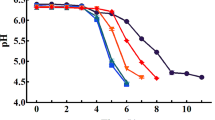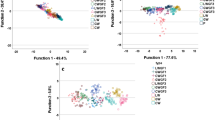Abstract
Defatted rice bran (DRB), a byproduct of rice milling is a rich source of dietary fiber and minerals. In the present study, the physico-chemical characteristics, antioxidant potential of defatted rice bran (Laboratory-LDRB and Commercial -CDRB) and its utilization in preparation of bread were studied. The effect of incorporation of CDRB at varying levels (5, 10 & 15%) on the quality characteristics of bread including physical, rheological and sensory attributes were evaluated and the dietary fiber content and antioxidant activity were determined. The results indicated that LDRB had better nutrient profile, physical and antioxidant properties than CDRB. On the basis of physical characteristics, breads with 5% and 10% CDRB were found to be acceptable as such and those containing 15% were acceptable with addition of bread improvers. The dietary fiber content and total antioxidative activity of bread increased with increasing levels of CDRB, which also improved the shelf life. The results reveal that DRB can be incorporated in breads upto 10% and 15% as such or with bread improvers respectively, as source of fiber and natural antioxidant, as a functional ingredient.



Similar content being viewed by others
References
AACC (1983) Methods of analysis, 8th edn. American Association of Cereal Chemistry, St. Paul
AACC (2000) Methods of analysis. American Association of Cereal Chemistry, St. Paul
AOAC (1984) Methods of analysis, 14th edn. Association of Official Agricultural Chemists, Washington DC
AOAC (1986) Methods of analysis, 7th edn. Association of Official Agricultural Chemists, St. Paul
Asp NG, Johansson CG, Hollmer H, Siljestram M (1983) Rapid enzymatic assay of insoluble and soluble dietary fibers. J Agric Food Chem 33:476–482
Dorman HJD, Peltoketo A (2003) Characterization of the antioxidant properties of de-odorized aqueous extracts from selected Laminaceae herbs 83:255–262
Godber SJ, Xu Z, Hegsted M, Walker T (2002) Rice bran and rice bran oil. In: Functional foods development. Fall of Louisiana Agriculture
Gopala Krishna AG, Khatoon S, Sheila PH, Sarmandal CV, Indira TN, Mishra A (2001) Effect of refining of crude rice bran oil on the retention of oryzanol in the refined oil. JAOCS 78(2):127–131
Houston DF (1972) In: Rice chemistry and technology. American Association of Cereal Chemists. St. Paul, MN
Iqbal S, Bhanger MI, Anwar F (2005) Antioxidant properties and components of some commercially available varieties of rice bran in Pakistan. Food Chem 93:265–272
Irvine GN, McMillan MF (1960) The remix baking test. Cereal Chem 37:603–613
James C, Sloan S (1984) Functional properties of edible rice bran in model systems. J Food Sci 29:310
Kim JS (2005) Radical scavenging capacity and antioxidant activity of the E vitamer fraction in rice bran. J Food Sci 70(3):208–213
Linda EC (1990) Functional properties and applications of stabilized rice bran in bakery products. Food Technol. April:74–76
Prakash J, Ranganatham G (1995) Proximate composition and protein quality of stabilized rice bran. J Food Sci Technol 32(5):416–419
Sharma HR, Chauhan GS (2002) Effects of stabilized rice bran-fenugreek blends on the quality of breads and cookies. J Food Sci Technol 39(3):225–233
Sharp CQ, Kitchens KJ (1990) Using rice bran in yeast bread in a home baker. Cereal Foods World 35(10):1021–1204
Siu GM, Hegarty HH (1978) A survey of malonaldehyde content of retail meat and fish. J Food Sci 43:1147–1149
Skurray DA, Wooldridge NM (1986) Rice bran as a source of dietary fiber in bread. J Food Technol 21:727–730
Talwalker RT, Garg NK (1965) Rice bran—a source material for pharmaceuticals. J Food Sci Technol 2(Oct–Dec):117–119
Yen GC, Chen HC (1995) Antioxidant activity of various tea extracts in relation to their antimutagenicity. J Agric Food Chem 43:27–32
Yildirim A, Ahmet M, Kara AA (2003) Antioxidant and antimicrobial activities of Polygonum cognatum. J Sci Food Agric 83:64–69
Author information
Authors and Affiliations
Corresponding author
Rights and permissions
About this article
Cite this article
Sairam, S., Gopala Krishna, A.G. & Urooj, A. Physico-chemical characteristics of defatted rice bran and its utilization in a bakery product. J Food Sci Technol 48, 478–483 (2011). https://doi.org/10.1007/s13197-011-0262-y
Revised:
Accepted:
Published:
Issue Date:
DOI: https://doi.org/10.1007/s13197-011-0262-y




